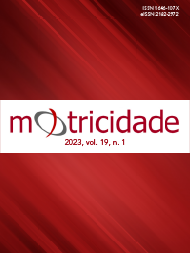The influence of media in sport: a narrative review
DOI:
https://doi.org/10.6063/motricidade.29153Keywords:
Sport, Football, Media, Communication Theories, Media effectsAbstract
Sport, football in particular, and the media have developed a complex, mutually advantageous relationship over several decades. However, to date, studies on this symbiotic relationship are still limited, noting an apparent lack of scientific support, especially concerning the effects that the media can have on professional football players. Thus, this narrative review aimed to contribute to a better understanding of this phenomenon. The literature on this matter focuses mainly on audiences, considered here as recipients of messages. However, essentially, studies indicate some difficulty in defining a specific communication model for sport, namely regarding the hypothetical cause/effect relationship (message/effect on the receiver). Furthermore, it should be considered that this media/sport symbiosis evolves over time in a self-feeding circuit, boosted by technology and the social and cultural context that surrounds sports. Although the consulted literature suggests the existence of an effect of the media in professional football, there does not seem to be solid evidence of this influence, for example, in the sports readiness of players and/or teams. In the opinion of the consulted authors, the subject requires a bio-behavioural approach in the sense of providing explanations for behavioural events but also of a psychophysiological nature associated with competitive stress. There will be a long way to go in understanding this issue, where the perspective of professional football players and coaches will appear as an immediate and fundamental contribution to leverage research in this area.
Downloads
Published
Issue
Section
License
The authors of submitted manuscripts must transfer the full copyright to Journal Motricidade / Sílabas Didáticas Editions. Granting copyright permission allows the publication and dissemination of the article in printed or electronic formats, and copyrights start at the moment the manuscript is accepted for publication. It also allows Journal Motricidade to use and commercialise the article in terms of licensing, lending or selling its content to indexation/abstracts databases and other entities.
According to the terms of the Creative Commons licence, authors may reproduce a reasonable number of copies for personal or professional purposes, but without any economic gain. SHERPA/RoMEO allows authors to post a final digital copy (post-printing version) of the article on their websites or on their institutions' scientific repository.


